Lighting over the kitchen table

The kitchen is often called the heart of the house - it is there that life is in full swing, and all the inhabitants constantly gather. The lighting of this room should be thoughtful, because it is important to ensure comfort and coziness in each of the available zones. In addition, in Russian realities, the correct lighting is also responsible for the successful modification of the space, its expansion and zoning.
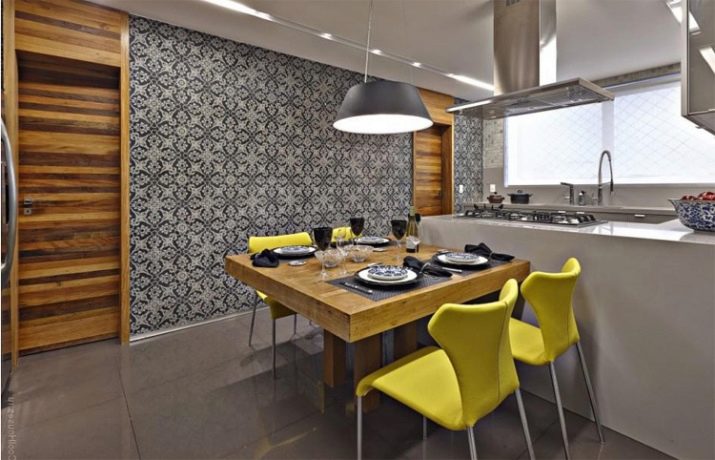
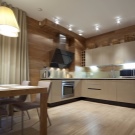

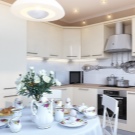
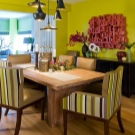
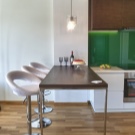
Fundamental rules
When thinking about a lighting system in a kitchen, it is important to adhere to several important aspects. The main task is to make the room light, cozy and pleasant. In addition, a variety of lamps and sconces provide space zoning. For example, it is necessary to highlight a work area, as well as designate a place for eating by placing a lamp above the dining table.
It is worth remembering that an excess of light, which even causes pain in the eyes, can be not only unpleasant, but also extremely uneconomical.
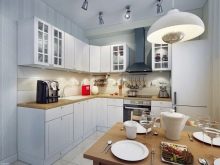
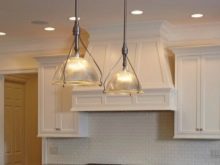

It will be most convenient to decorate the space using a multi-level lighting system. Alternatively, several built-in lamps are mounted above the workspace, and a chandelier is placed above the kitchen table, the cord of which allows you to adjust the height of the lampshade. It is better to choose plafonds as simple as possible, without complex decorative details and curls. Since it is in the kitchen that constant pollution is likely, it will be difficult to regularly wash such suspensions. It is recommended to combine large lamps with miniature spotlights, and also remember that the more light sources there are in the room, the lower the power of each of them should be.
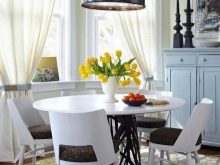
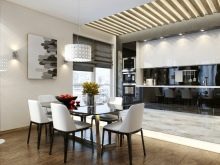
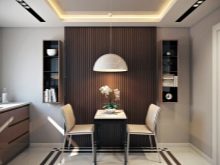
If the size of the room allows, then ceiling lamps should be placed as low as possible - this will add comfort to the space. If the goal is the opposite - to expand the room, then the lamps should be placed higher.
All lamps used in the kitchen must be either from the same collection, or they must be harmoniously combined. It is important that the style, the shape, the color, and even the material look good.
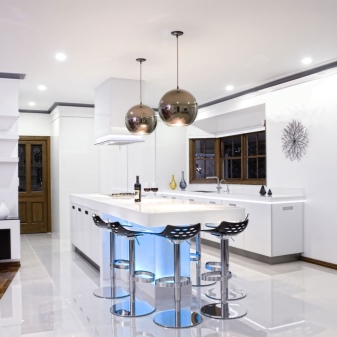
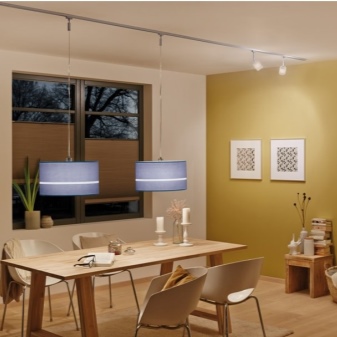
Peculiarities
Most often, pendant lamps on a long cord are chosen to illuminate the dining area in the kitchen. This piece of furniture looks very stylish, besides, it completely copes with the tasks. Typically, for an average room, one lamp is sufficient, placed directly above the center of the table.but if the table is of outstanding dimensions, then the number of lamps, of course, increases proportionally. When mounting light bulbs, it is important not to find a place for them above the heads of seated people. Shades are recommended to use a simple geometric shape, such as a ball, cone or rectangle.
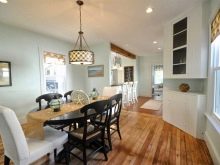

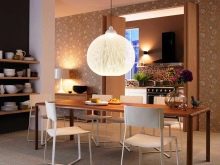
The most suitable materials include crystal, glass and plastic. A paper lampshade is not suitable for the kitchen, as it will quickly fail. The same applies to the metal model - it will become constantly dirty and will have to be cleaned regularly. When decorating a dining space, you can combine several light sources. For example, you can hang a chandelier right above the table, and place a pair of sconces on the wall next to it.
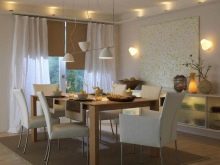
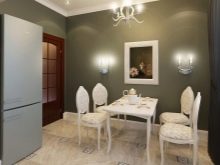

If the kitchen is large and the table is long, then you can place several wall lights at an equal distance from each other. By the way, the lighting of the dining table is also determined depending on where it is located.A piece of furniture placed against the wall will be perfectly illuminated by one or two chandeliers placed at a height of 1 to 1.2 meters from the table. If the table stands apart, then it is better to raise the chandelier to a height of 1.5 meters.
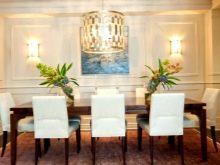
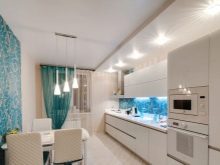

Light in a small kitchen
Making a kitchen, the size of which does not exceed 7 square meters, it will be enough to get by with a single chandelier in the center of the ceiling and, if necessary, several LED spotlights directly in the working area.
If you want to, you can select a table with a pair of miniature wall sconces - they will not steal space, but will allow you to create a cozy atmosphere for an early breakfast or late dinner.
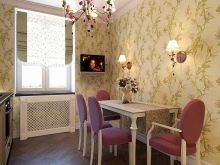
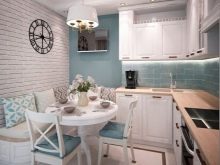
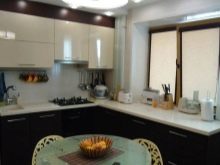
Shades and lampshades should be proportional to the size of the room. In addition, the use of long cords or the same base of floor lamps is inappropriate. When using LEDs on the ceiling, it is a good idea to point them up, directly at the ceiling. This will also visually expand the space. If in a small kitchen there is also a low ceiling, then the central chandelier should be abandoned. Instead, it is better to place a row of wall lamps around the perimeter of the entire room.
It is important to remember that if there is only one ceiling lamp in the room, then its light will narrow the walls, so it should not be in narrow spaces either.

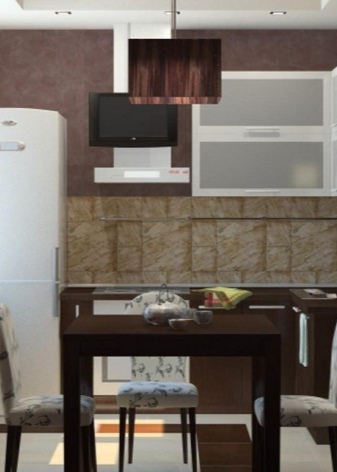
Kitchen-living room lighting
Often in kitchens combined with living rooms, the bar counter acts as a divider, which, in addition, is the dining area. Or an ordinary kitchen table plays a similar role. In this case, the backlight can be either point or in the form of a lamp of any size. You can even create a drywall structure directly above the eating area, into which you can mount LED bulbs. This will visually delimit the space and become an unusual interior solution.
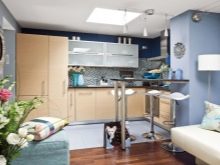
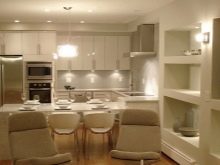
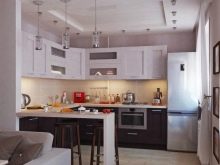
Types of lamps
Most often, LED lamps are installed in the kitchen, the main advantage of which is, of course, low energy consumption. They have a long shelf life, good strength, small size and a lower housing temperature than incandescent lamps. In addition, they are very easy to install, environmentally friendly and easily recyclable. For some, the increased cost may seem a disadvantage, but given the long service life, this is justified. If the LED is cheap and of poor quality, burnout may occur.
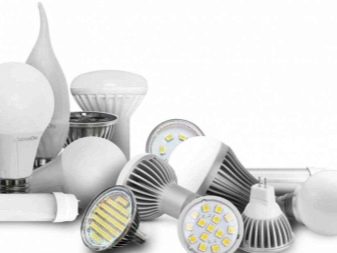

The most famous are incandescent lamps. They cost little, look compact and are not afraid of too high or too low temperatures. However, such bulbs serve very little, they overheat during prolonged operation and do not produce enough light.

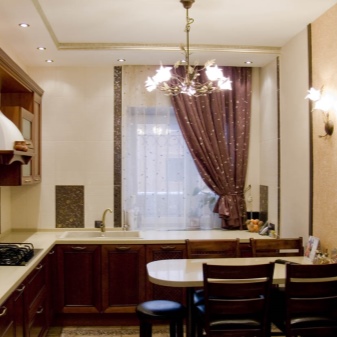
Halogen bulbs are more compact than incandescent bulbs. They last longer and are highly efficient. However, halogens overheat quickly. In addition, if before turning on them there are prints of greasy fingers, they will burn and leave black spots.
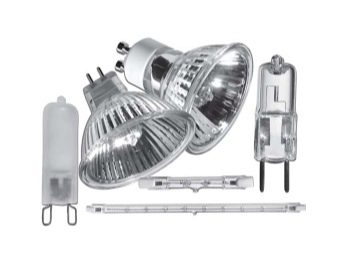

Fluorescent lamps have a long service life and create pleasant diffused light. In addition, there is a wide variety of color variations. Disadvantages include chemical hazards arising from the presence of mercury, insufficient power, and not particularly pleasant visual effect.

The location and design of the lamp shade also affects the overall perception of the kitchen. For example, a one-piece shade that completely hides the light bulb will provide soft and gentle lighting. A light bulb, which the plafond covers only from above, will direct the flow of light downward, which means it will be suitable for zoning. Sconces facing upwards create more general lighting.
Some models allow you to change the direction of the light flux, which allows you to change the atmosphere in the kitchen, replacing the general lighting with local lighting.
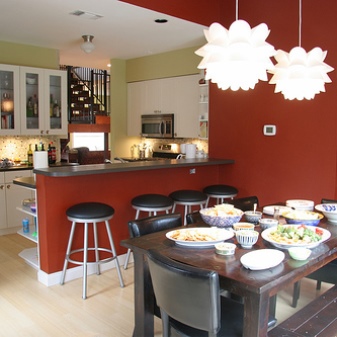
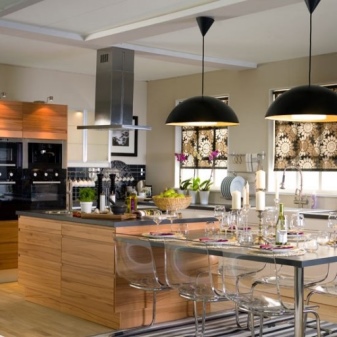
Beautiful examples
Above the glass dining table of the kitchen, decorated in a modern style, a group of lamps, distinguished by their unusual shape, but matching in style, will perfectly fit. The beautiful gloss on the outside and the bright yellow color on the inside of the shades will create a very stylish and attractive decor element. These lamps should be placed at different heights to enhance the effect.
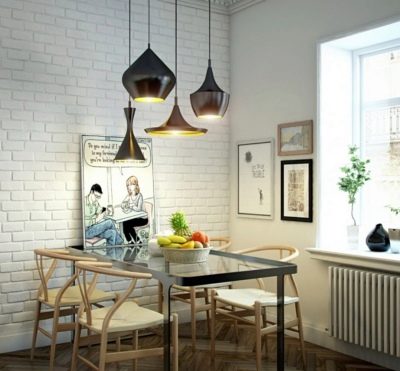
The combination of seven spherical lamps of different sizes, located at different heights, looks very impressive. The black mirror surface will create an unusual effect and further expand the space. Of course, such a solution is only suitable for a large space, for example, for a kitchen combined with a dining room.
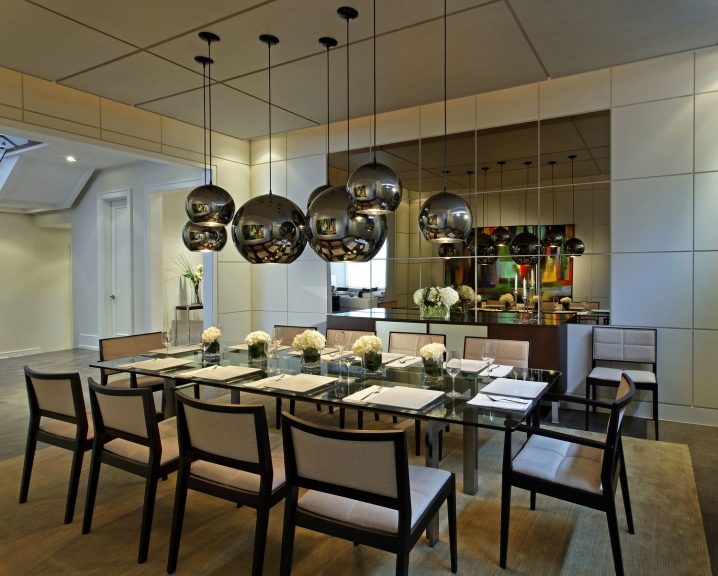
If the kitchen itself is decorated in white, then the same lamps should be used for a calm atmosphere. Two plafonds of the classic "bell" shape should be enough.
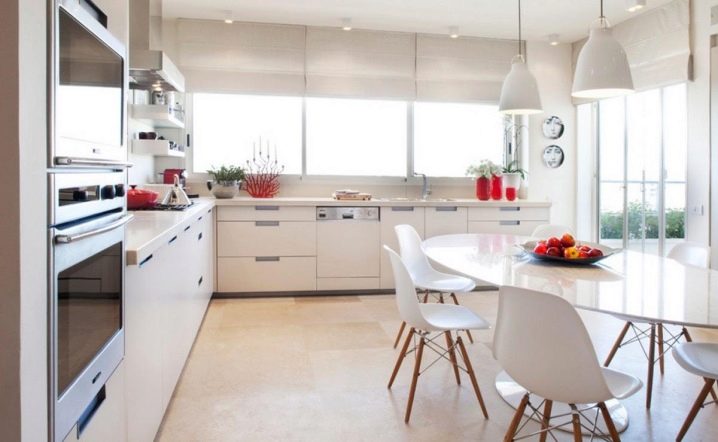
Finally, in a small kitchen, one discreet light-colored chandelier with an LED lamp is enough for zoning the dining area. In color, it should overlap with other elements of the room.
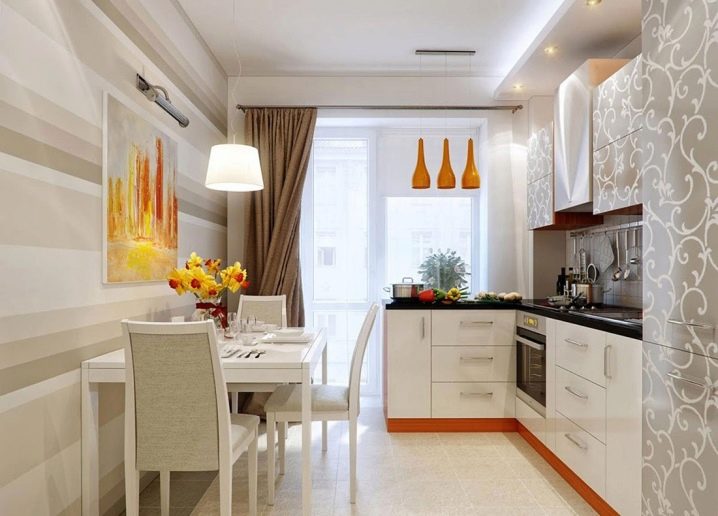
For the rules of lighting in the kitchen, see the next video.











The comment was sent successfully.